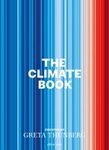![An Introduction to Numerical Weather Prediction Techniques An Introduction to Numerical Weather Prediction Techniques]()
Click to have a closer look
About this book
Contents
Customer reviews
Related titles
About this book
An Introduction to Numerical Weather Prediction Techniques is unique in the meteorological field as it presents for the first time theories and software of complex dynamical and physical processes required for numerical modeling. It was first prepared as a manual for the training of the World Meteorological Organization's programs at a similar level. This new book updates these exercises and also includes the latest data sets. This book covers important aspects of numerical weather prediction techniques required at an introductory level. These techniques, ranging from simple one-dimensional space derivative to complex numerical models, are first described in theory and for most cases supported by fully tested computational software. The text discusses the fundamental physical parameterizations needed in numerical weather models, such as cumulus convection, radiative transfers, and surface energy fluxes calculations. The book gives the user all the necessary elements to build a numerical model. An Introduction to Numerical Weather Prediction Techniques is rich in illustrations, especially tables showing outputs from each individual algorithm presented. Selected figures using actual meteorological data are also used.This book is primarily intended for senior-level undergraduates and first-year graduate students in meteorology. It is also excellent for individual scientists who wish to use the book for self-study. Scientists dealing with geophysical data analysis or predictive models will find this book filled with useful techniques and data-processing algorithms.
Contents
IntroductionFinite DifferencesFinite Difference FormulationFirst DerivativeSecond DerivativeThe Laplacian OperatorThe Jacobian OperatorTime DifferencingCalculation of Vertical MotionVertical Velocity from Irregularly Spaced Wind DataVertical Velocity from Regularly Spaced Wind DataVertical Velocity from the Quasi-Geostrophic Omega EquationMultilevel Non-Linear Balance Omega EquationNumerical AlgorithmsEstimation of Streamfunctions, Velocity Potential, and Geopotential Height from the Wind FieldRelaxation MethodFourier Transform MethodGeopotential Height from the Wind FieldObjective AnalysisPanofsky's Method, Polynomial ApproachCressman's Method, Successive Corrections TechniqueBarnes' Objective Analysis SchemeOptimum Interpolation TechniqueBasic Physical ConceptsConversion of Moisture VariablesDetermination of the Lifting Condensation Level (LCL)Moist Adiabatic ProfileConvective AdjustmentA Simple Cloud ModelCumulus Convection and Large Scale CondensationCumulus ConvectionArakawa-Schubert Cumulus Parameterization SchemeLarge Scale CondensationPlanetary Boundary LayerBulk Aerodynamic Calculation over Ocean and LandRoughness ParameterSurface Fluxes from Similarity TheoryHeight of the Boundary Layer in an Unstable SituationHeight of the Boundary Layer in a Stable SituationVertical Distribution of FluxesRadiative TransfersLongwave RadiationShortwave RadiationCloud SpecificationRadiative Heat Balance at the Earth's SurfaceThe CodeThe Barotropic ModelDynamics of the Barotropic ModelProperties of Barotropic FlowBarotropic Energy ExchangeModel Structure and Boundary ConditionsTreatment of the Advective Terms and Time Differencing SchemeInitial ConditionsDescription of the CodeThe Single Level Primitive Equations ModelDynamic of the Single Level Primitive Equations ModelProperties of the Single Level Primitive Equations ModelModel Structure and Boundary ConditionsTreatment of the Advective Terms and Time Differencing SchemeComputation of the Forcing FunctionsInitialization of the Single Level Primitive Equations ModelData Sets for Numerical Weather PredictionRainfall Distribution from Outgoing Longwave RadiationSSM/I Based Rain Rates, Wind Speed, and Total Precipitable WaterNormalized Difference Vegetation IndexFractional Cloud CoverModel Output DiagnosticsEnergy and Energy Transformation TermsOn the Computation of the 4-Dimensional TrajectoriesReferencesList of SubroutinesIndex
Customer Reviews



































